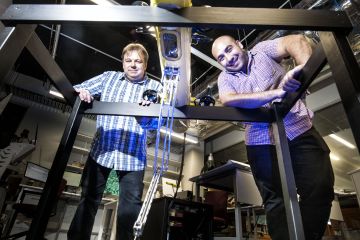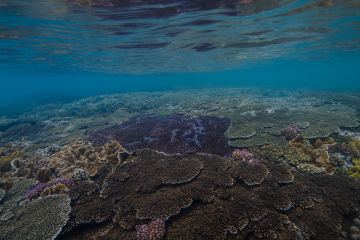Media Release ·
The Tiffany & Co. Foundation Commits $1 Million to the Reef
Challenge to fund innovative ideas

#Innovation at work
#Media Release
We believe there is reason for hope
The Tiffany & Co. Foundation announced today that it has committed approximately $1.4 million AUD ($1 million USD) to help protect and restore Australia’s Great Barrier Reef. This magnificent natural wonder is the world’s largest living organism, encompassing an area approximately the size of Italy and hosting some of the richest biodiversity on Earth. However, various threats—such as climate change, poor water quality and impacts from human activity—have led to a widespread decline of coral cover in recent years.
The Tiffany & Co. Foundation has supported coral conservation worldwide for nearly two decades. This recent commitment in Australia focuses on recovering the Reef by funding both short and long-term solutions, including Great Barrier Reef Foundation’s Out of the Blue Box Innovation Challenge and Reef Aid, a project of Greening Australia.
“We believe there is reason for hope,” said Anisa Kamadoli Costa, chairman and president of The Tiffany & Co. Foundation. “The Foundation is proud to support two of the leading organizations working to preserve the Great Barrier Reef, one of our planet’s most significant natural assets. Together, we can find novel solutions to preserve this precious coral ecosystem and ensure that it is vibrant and healthy for generations to come.”
Great Barrier Reef Foundation’s Out of the Blue Box Innovation Challenge (outofthebluebox.org), launching today, is a global call for new ideas to bolster the Great Barrier Reef’s future resilience. The Challenge calls for innovations in finance, technology and social science to ease pressures on the Reef and allow it to recover. One winning concept, chosen by an expert panel from diverse sectors, will earn a prize of up to $300,000 AUD (approximately $225,000 USD). The application period closes September 3 and the winner will be announced in late October.
“Only through cross-sector collaboration and diverse thinking are we going to find solutions to help our reefs recover in the face of complex threats like climate change,” said Anna Marsden, managing director, Great Barrier Reef Foundation. “We are privileged to have the support of The Tiffany & Co. Foundation in the development of the Out of the Blue Box Innovation Challenge. Through the Challenge, we hope to identify creative approaches to restore not only the Great Barrier Reef, but coral reefs around the world.”
To complement this search for long-term solutions, The Tiffany & Co. Foundation is also supporting tangible conservation efforts through Reef Aid, a project of Greening Australia. Reef Aid aims to improve water quality by restoring watersheds and wetlands near the Reef, halting erosion and thus significantly reducing the amount of sediment in ocean waters.
“Greening Australia and our partners are tackling one of the most critical threats to the iconic and globally significant Great Barrier Reef,” said Brendan Foran, CEO of Greening Australia. “With The Tiffany & Co. Foundation’s support, which will be matched with the same level of government funding, we will continue to improve water quality, boosting the Reef’s resilience to fight climate change.”
The Tiffany & Co. Foundation believes these two complementary approaches will contribute to various restoration efforts already underway, balancing the need for long-term solutions with immediate, tangible actions to safeguard the world’s most iconic reef.
Support of Great Barrier Reef Foundation’s Innovation Challenge was made possible through a grant to The University of Queensland in America Inc and support of Greening Australia’s Reef Aid project was made possible through a grant to Give2Asia.
#For more information and interviews:
AUSTRALIA: Louise Sturgess m +61 409 352 493 e lsturgess@barrierreef.org
UNITED STATES: Andrea Willis m 646-428-5966 e Andrea.Willis@tiffany.com
IMAGES: https://www.dropbox.com/sh/08ebv687bcc2dpp/AADpHHk7VenfSBen3qzS1vT8a?dl=0
Credit: Gary Cranitch, Queensland Museum.







